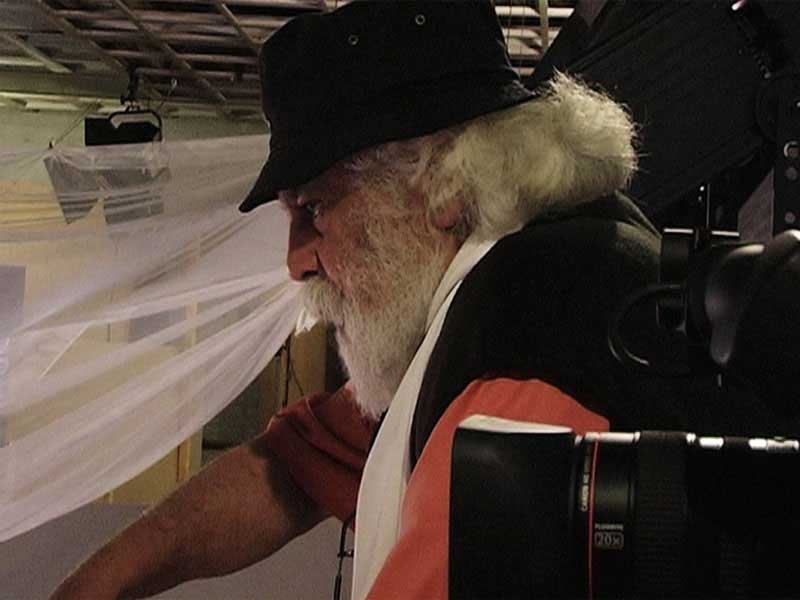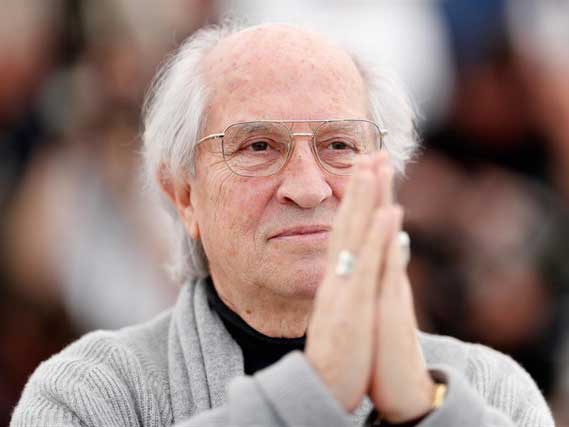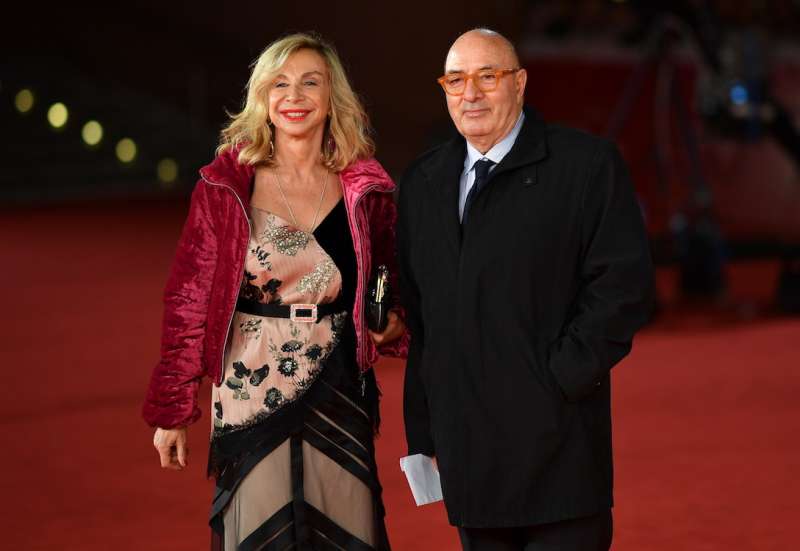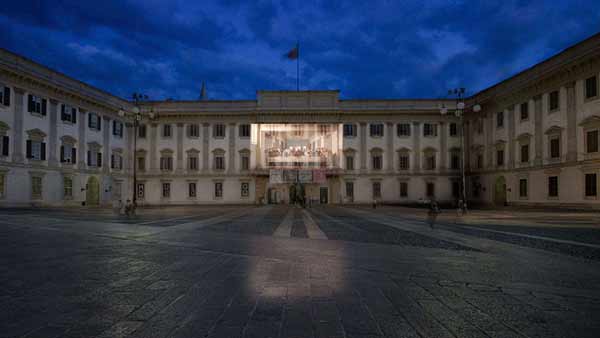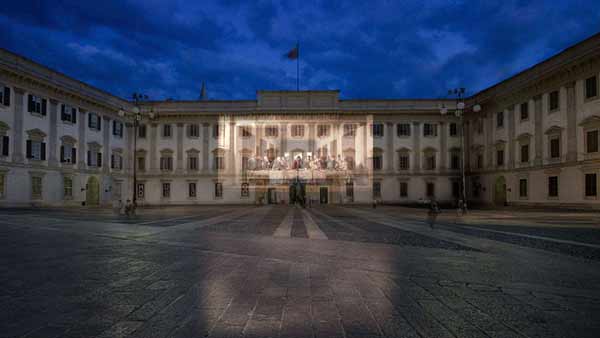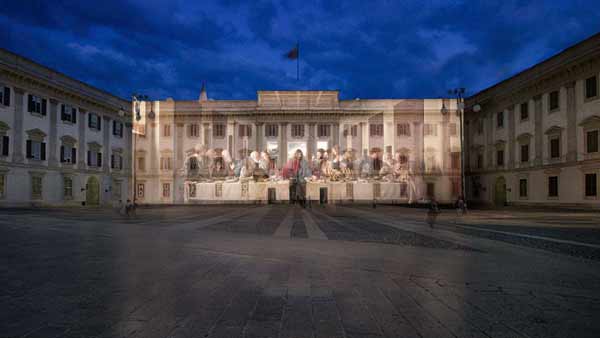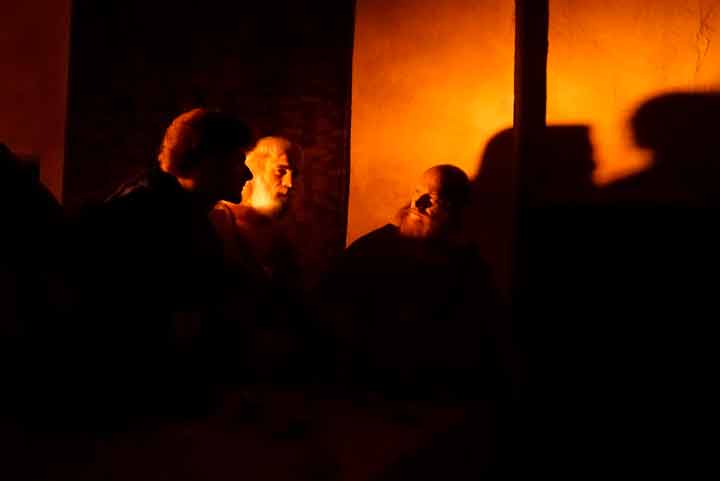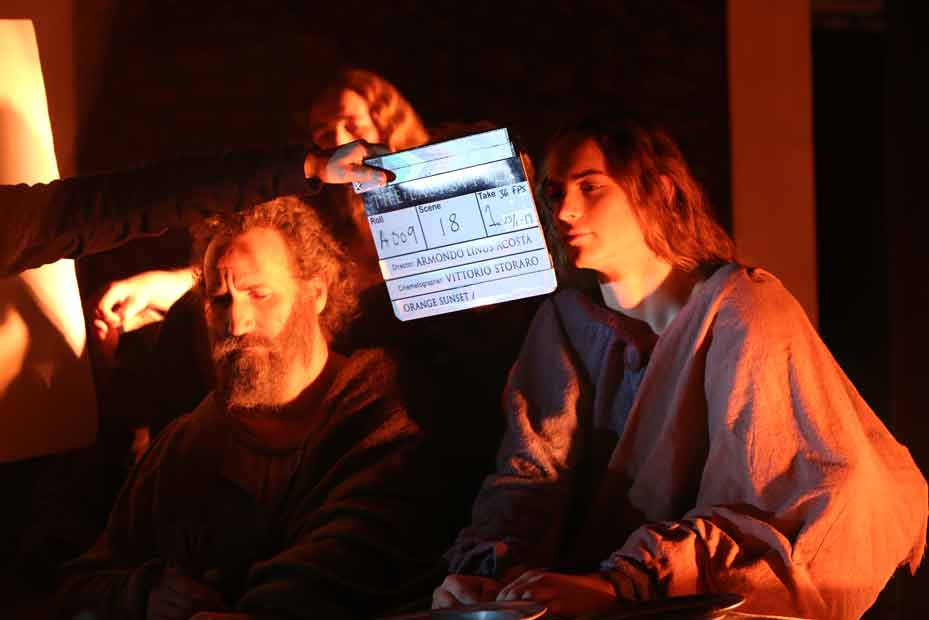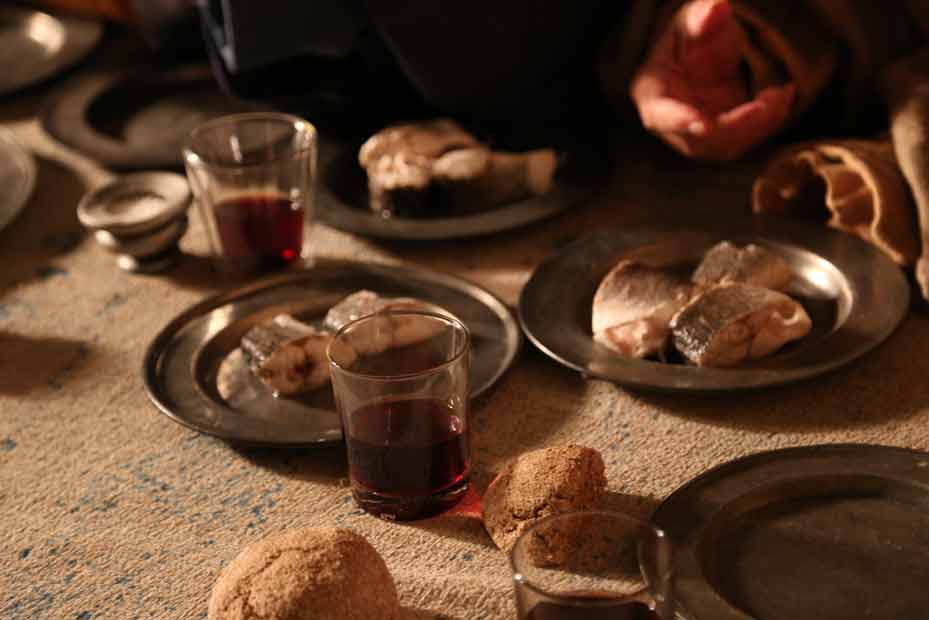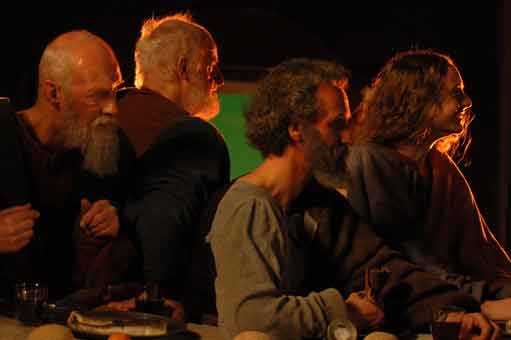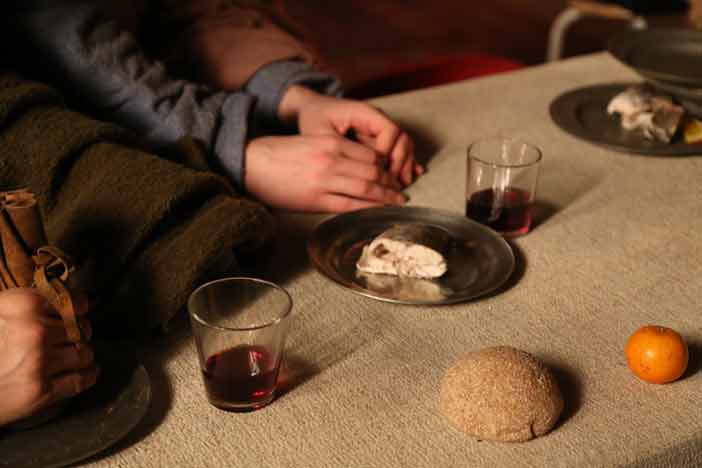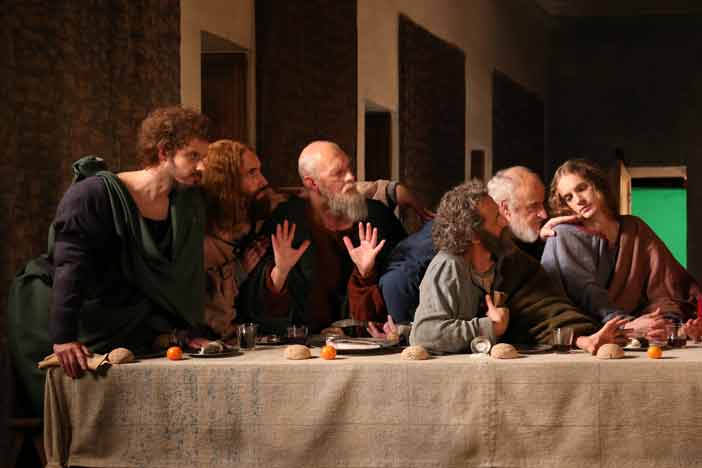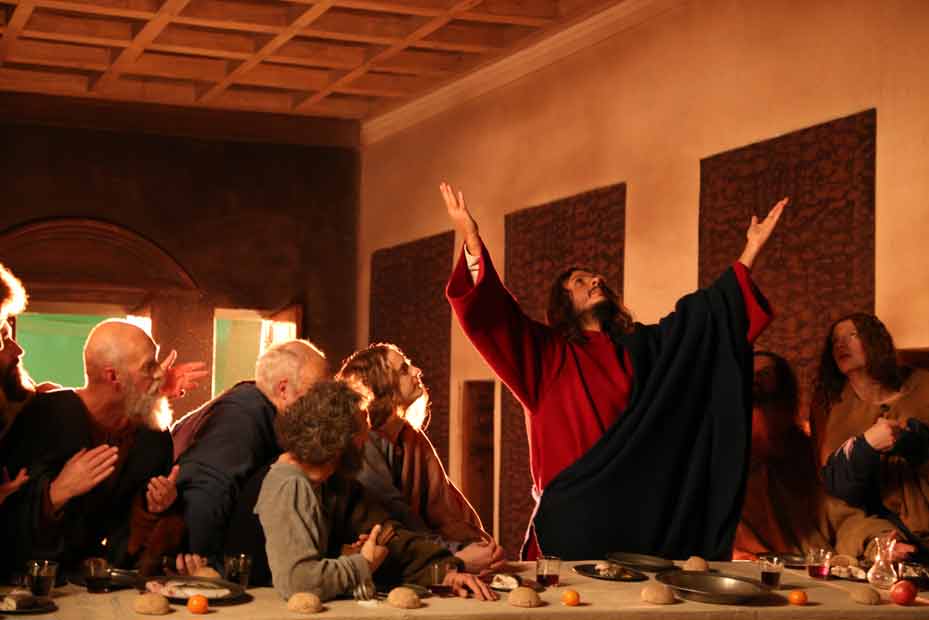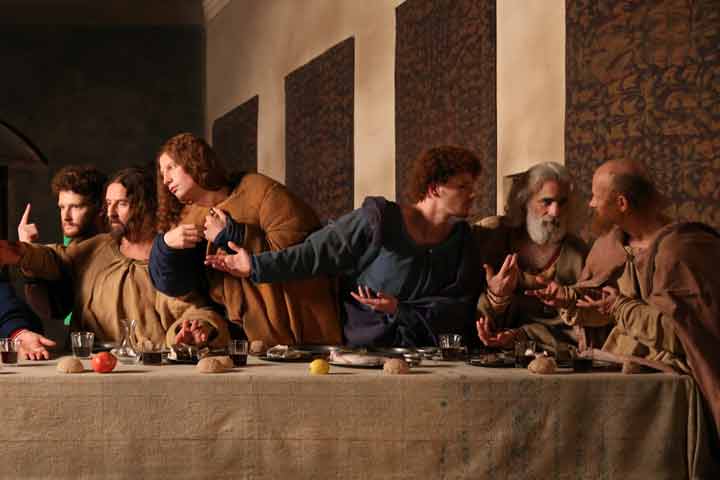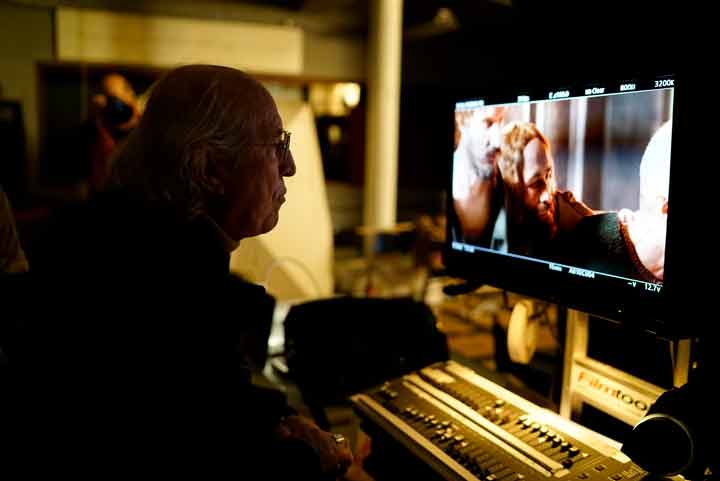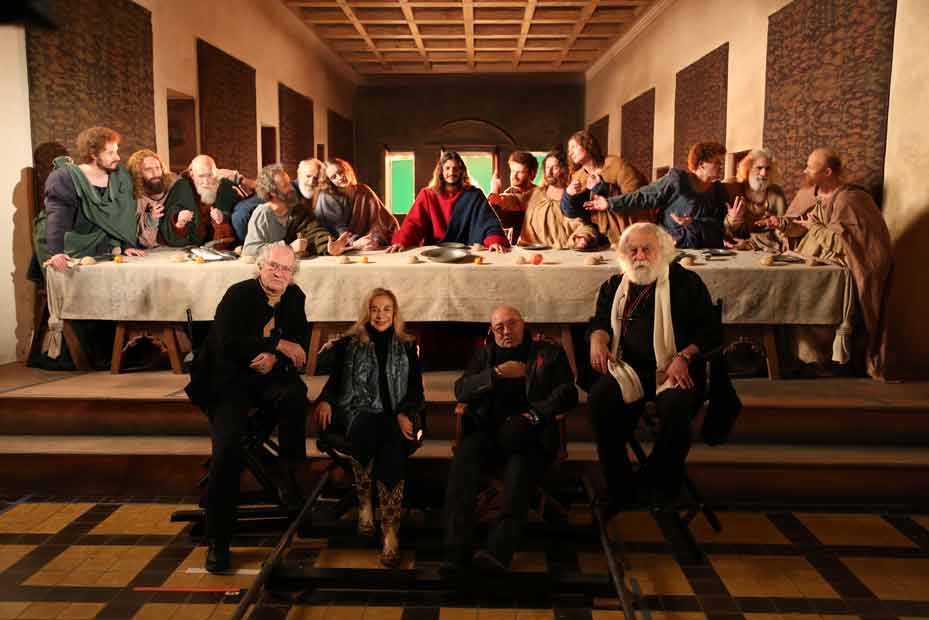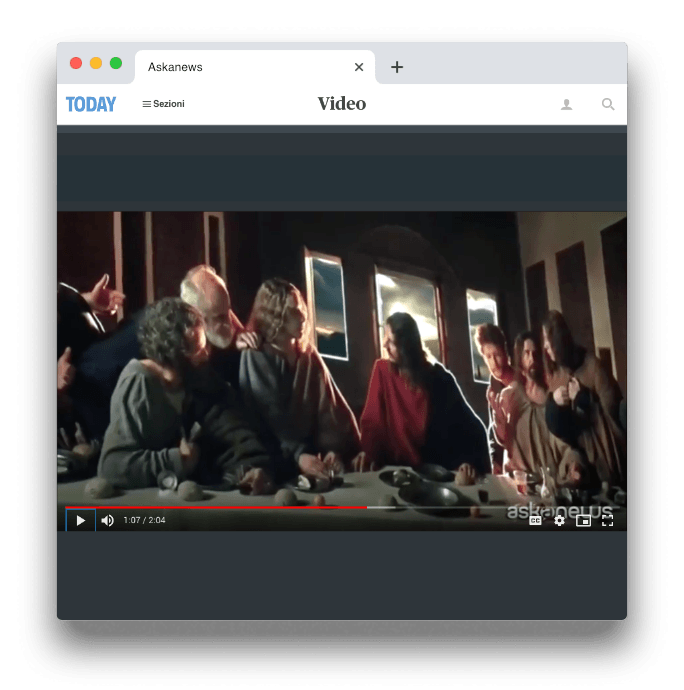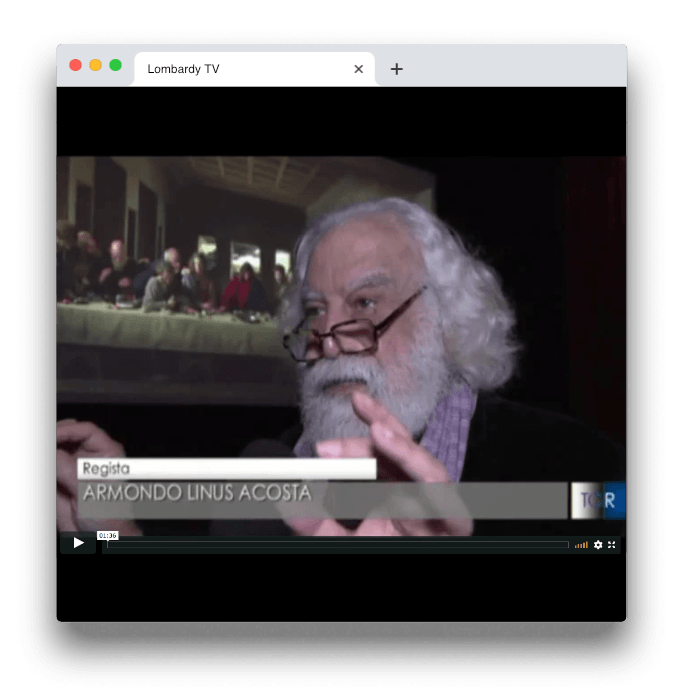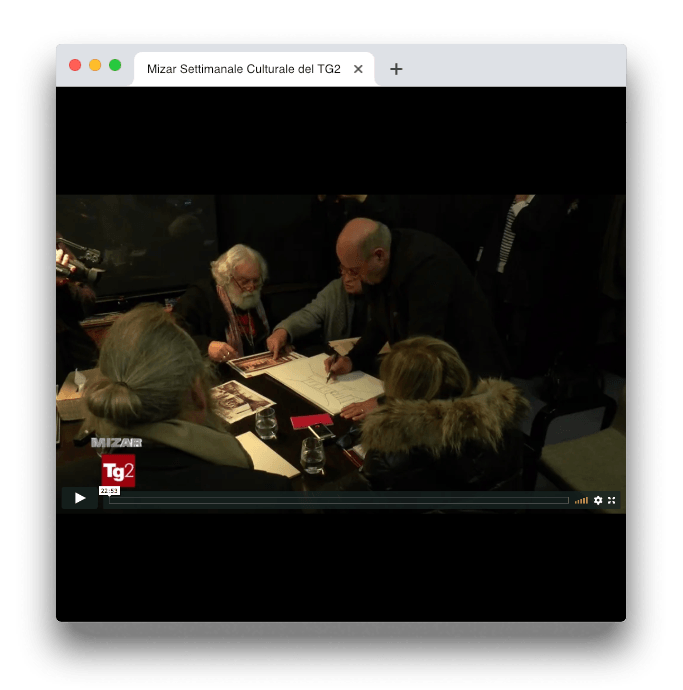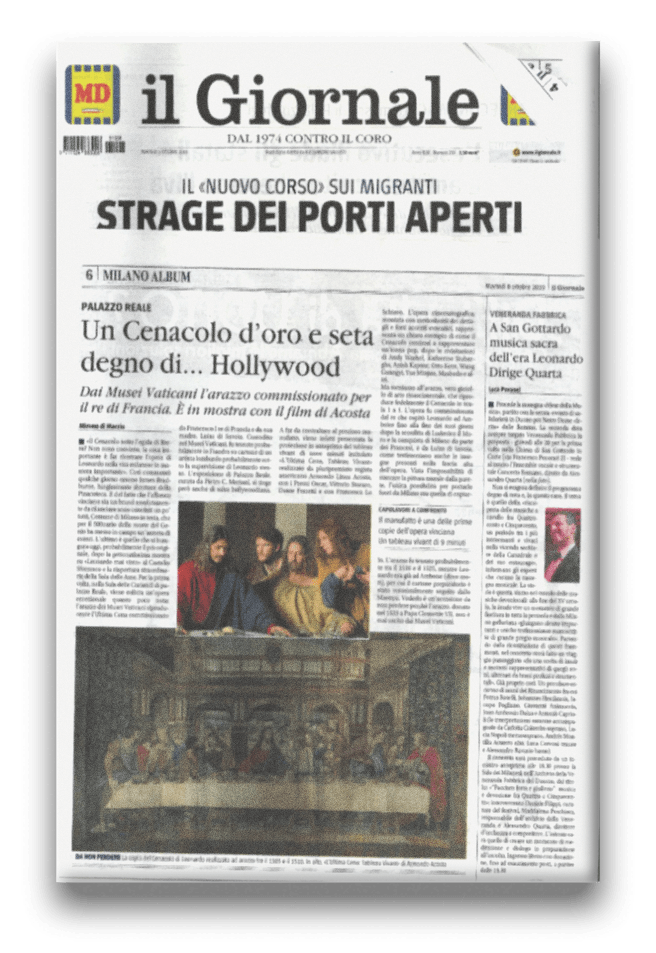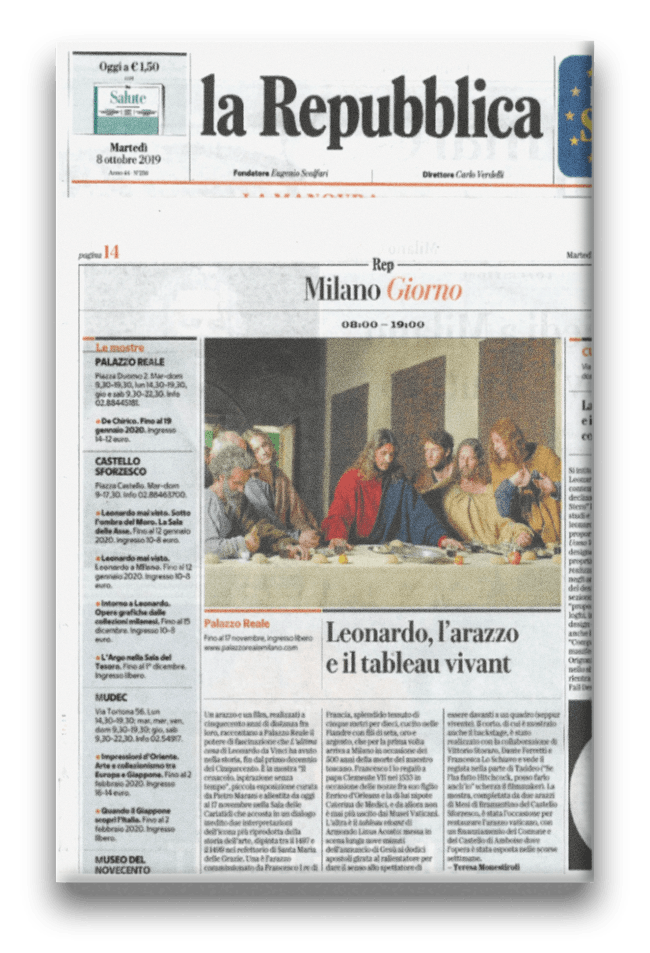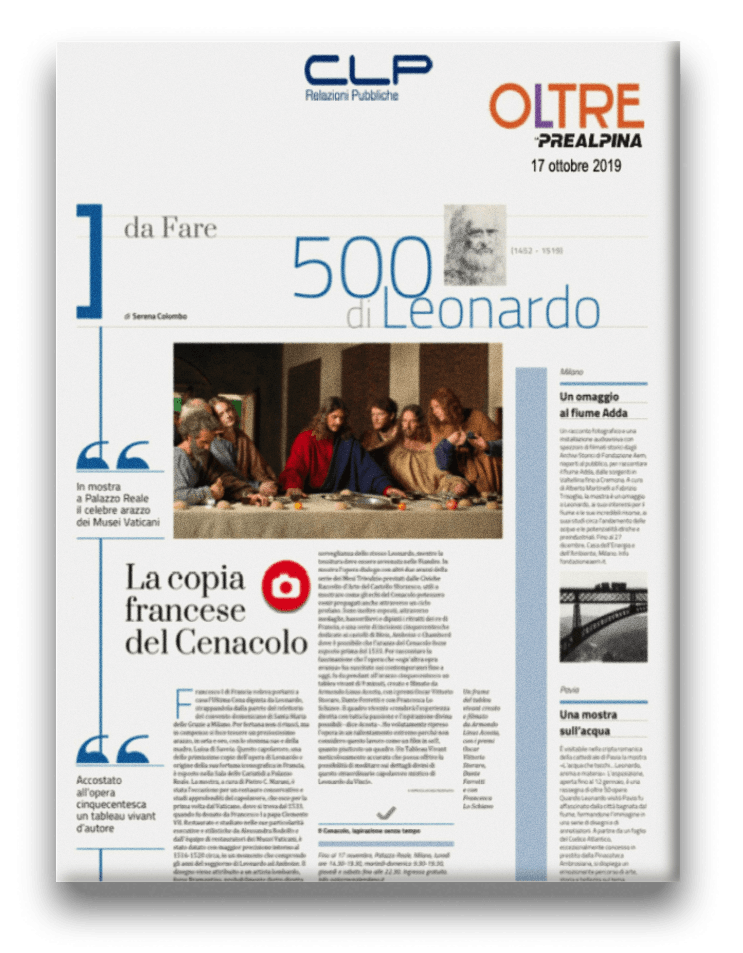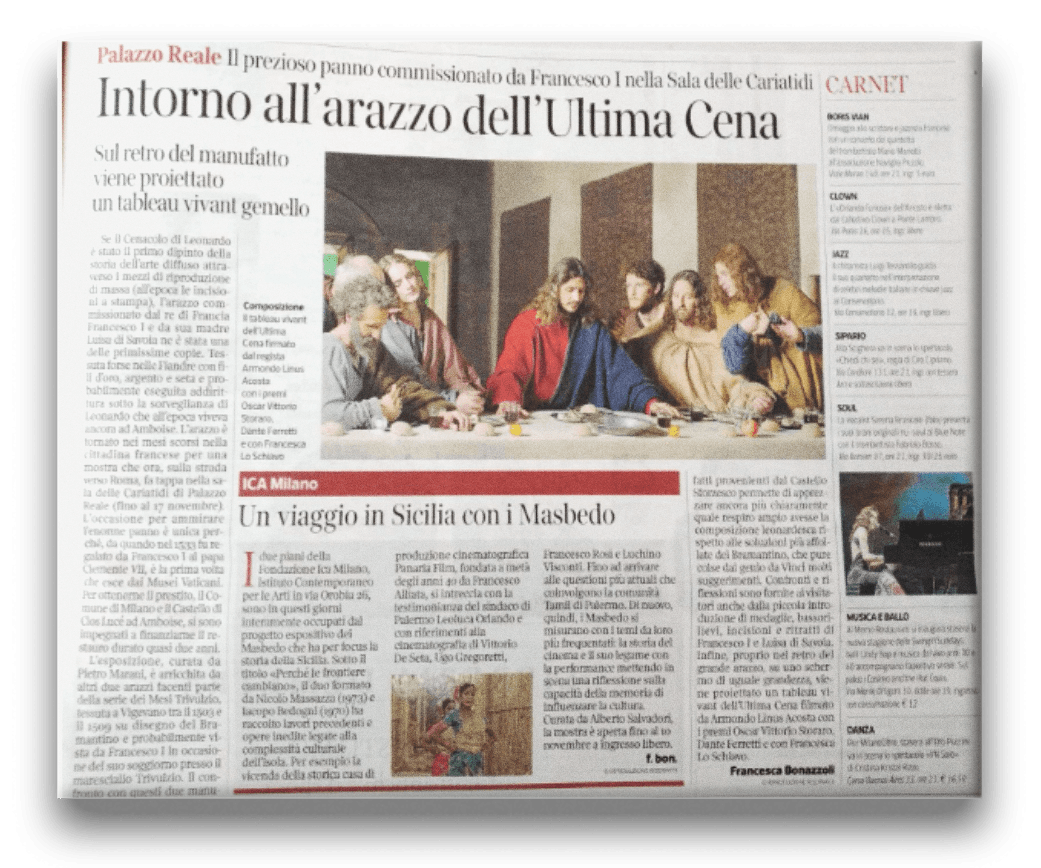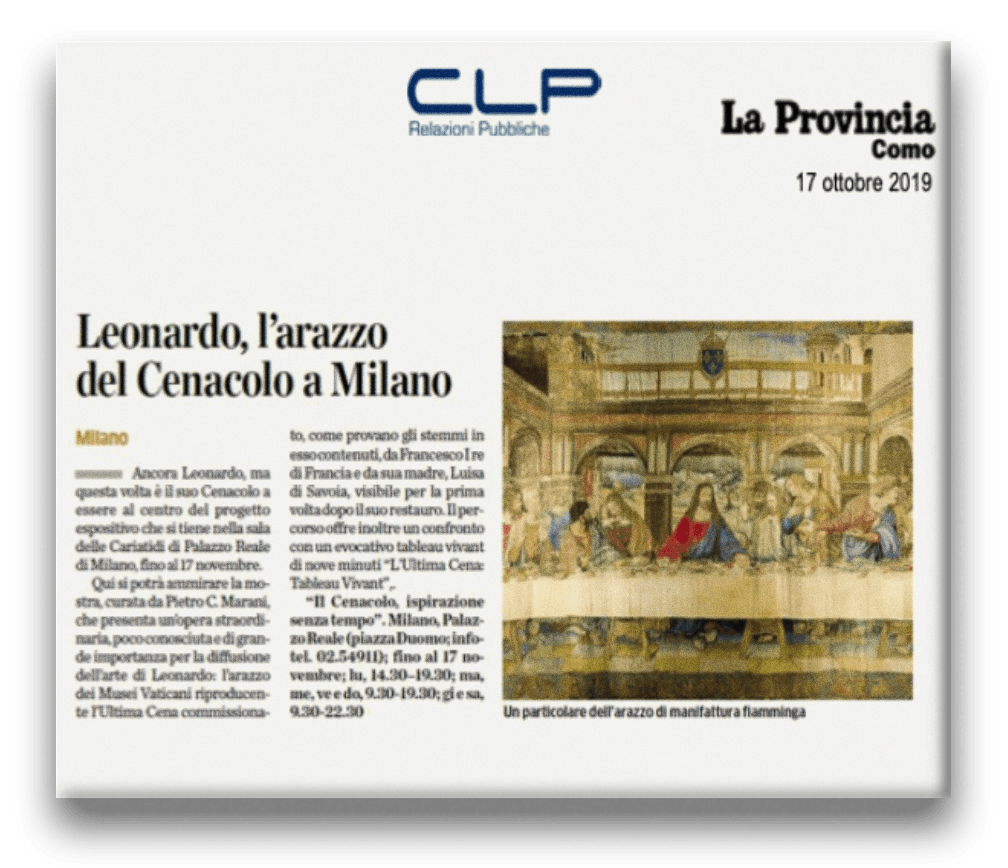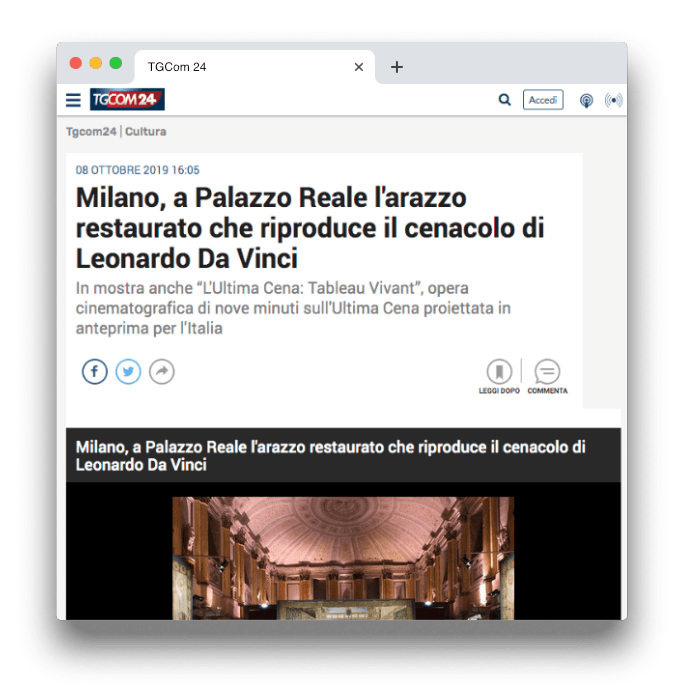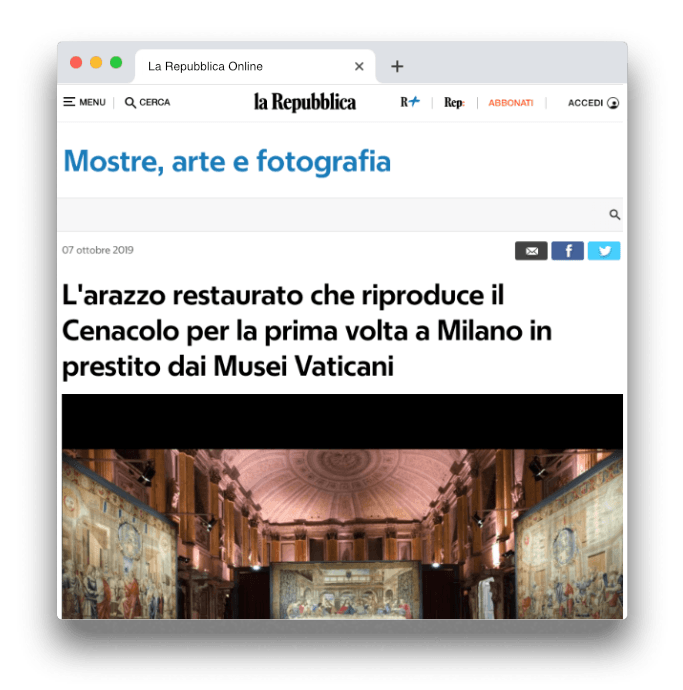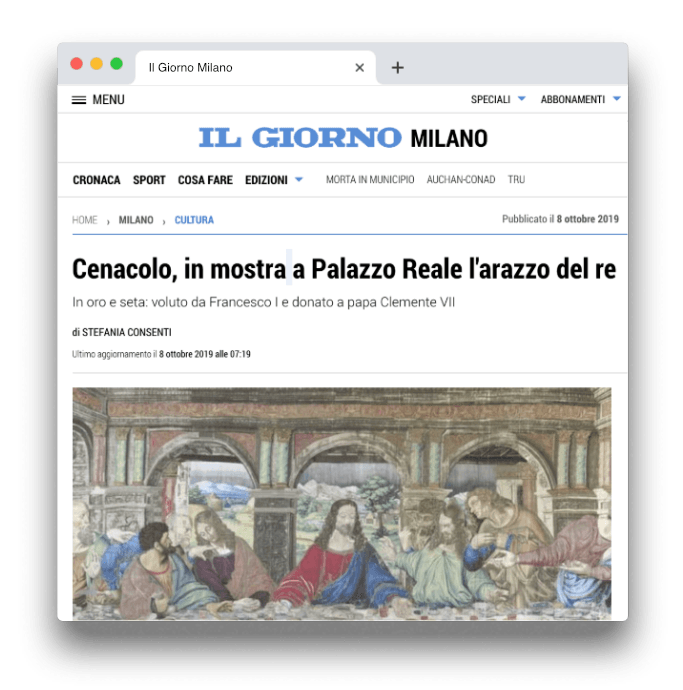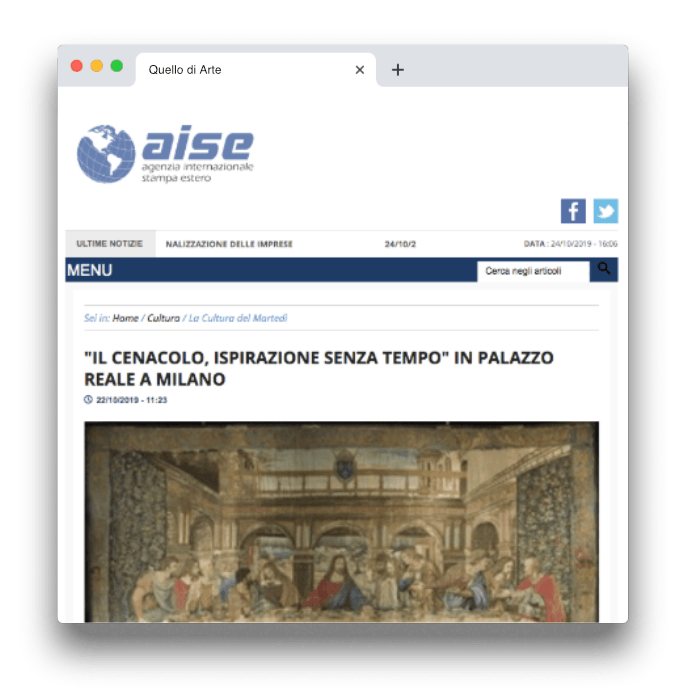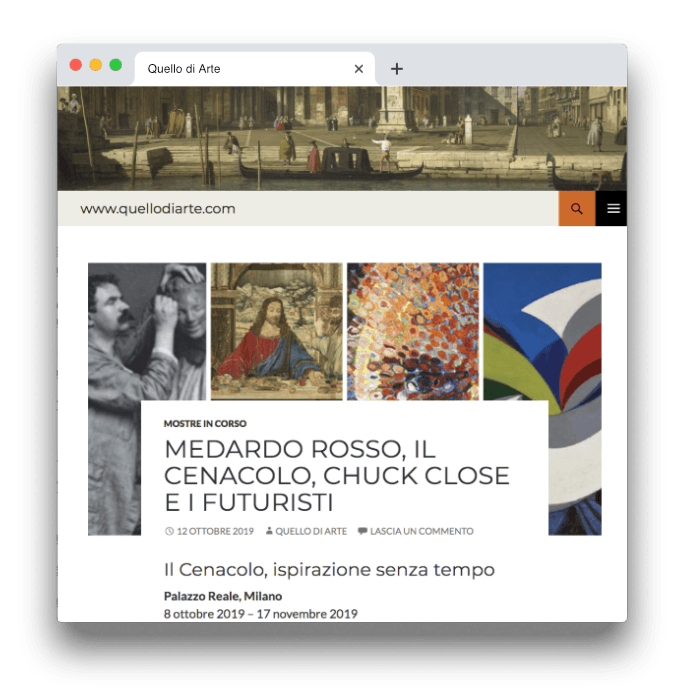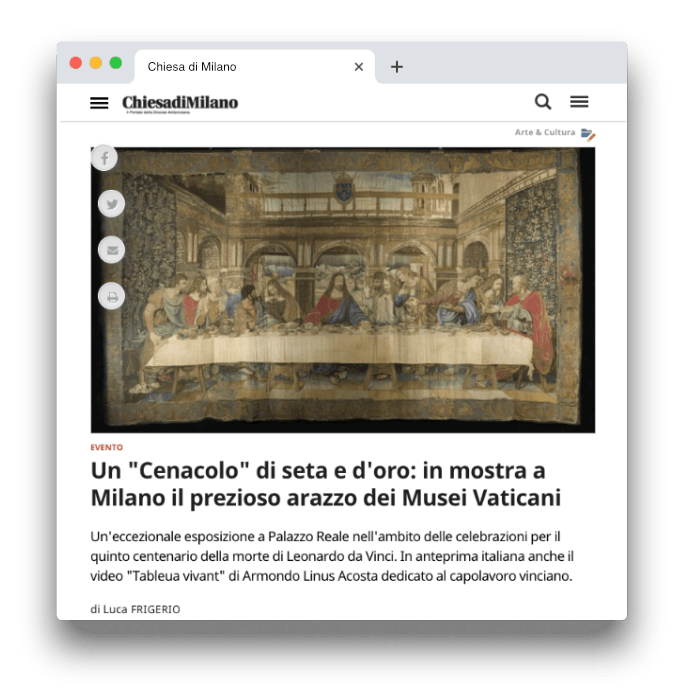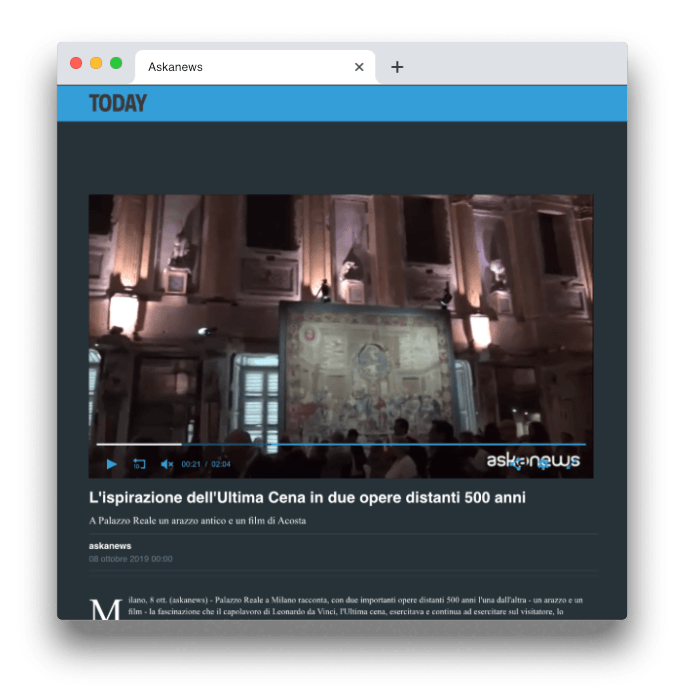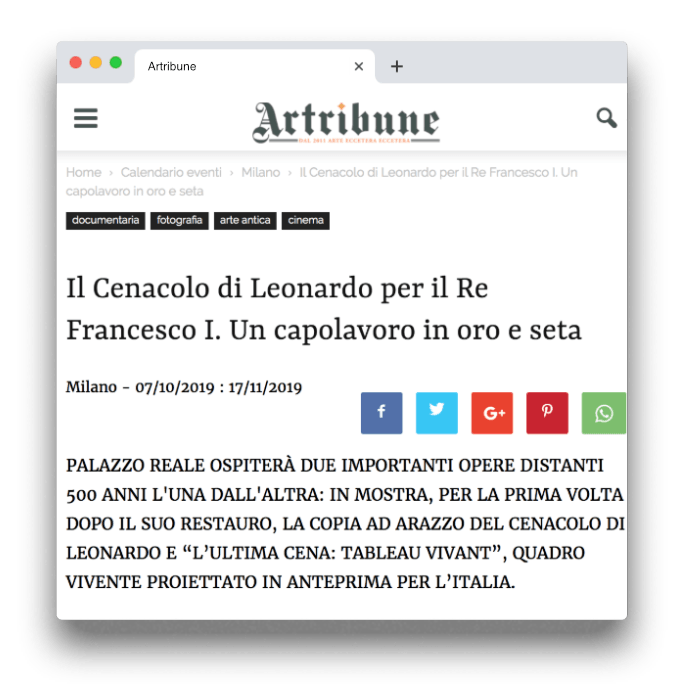Leonardo da Vinci's
THE
LAST
SUPPER


The Recreation of Leonardo da Vinci's Masterpiece
The Living Tableau
Created by
ARMONDO LINUS ACOSTA
Cinematography by
VITTORIO STORARO
Production Design by
DANTE FERRETTI
Set Decoration by
FRANCESCA LO SCHIAVO
a production by
THE ACADEMY OF FILM AND THE ARTS
The Recreation of Leonardo da Vinci's Masterpiece
The Living Tableau
Created by ARMONDO LINUS ACOSTA
Cinematography by VITTORIO STORARO
Production Design by DANTE FERRETTI Set Decoration by FRANCESCA LO SCHIAVO
a production by THE ACADEMY OF FILM AND THE ARTS
“THE LIVING TABLEAU” OVERVIEW
One of the world’s seminal masterpieces — Leonardo da Vinci’s The Last Supper — comes to life in The Last Supper: The Living Tableau, an evocative nine-minute video tableau vivant. “The Living Tableau” was created and filmed in exquisite and exacting detail by Director / Creator Armondo Linus Acosta with Academy Award®-winning collaborators Vittorio Storaro, the acclaimed cinematographer, and Dante Ferretti and Francesca Lo Schiavo, the famed production design and set decoration team.
These legendary filmmakers collaborated in 2019, creating a tour de force re-creation of Leonardo’s masterwork; their efforts coinciding with the worldwide celebration of the 500th anniversary of Da Vinci’s death. The result is a piece of ultimate beauty to be exhibited in museums, churches, galleries and piazzas worldwide as a breathtaking and large-scale video installation.
“The Living Tableau” will give the direct experience of The Last Supper “as passionately and divinely inspired as possible,” says Acosta. Each element of the ‘Tableau' was crafted with deep reverence for Leonardo and the painting (circa 1495–1497), respecting the groundbreaking parameters of its perspective which changed the way art was rendered forever. Acosta’s “The Living Tableau” is a work that blends high art and theater using a compelling technique which provides an unprecedented and inspired view of The Last Supper: “I intentionally filmed this in extreme slow motion as I do not consider this work a film per se, but a ‘tableau’. A painstakingly accurate piece whereby you have the opportunity to meditate on the divine details of this extraordinary mystical masterpiece by Leonardo da Vinci.”
The scene opens poetically on a timeless landscape over the first deep notes of Rossini’s Stabat Mater. From this evocative view, the room and iconic table are slowly revealed becoming a poignant moment of reflection where the twelve Apostles expectantly await the arrival of Jesus. As the men whisper to one another and wonder why they have been gathered, Jesus enters and takes His central position. Upon blessing both the disciples and the meal, the announcement of a betrayal from one amongst them is felt by all.
Leonardo’s great classic, a cornerstone of Italian cultural heritage, stands out in the popular imagination as the definitive portrayal of The Last Supper. Now captured on film, art lovers around the world will have the chance to experience the scene viscerally, feeling its monumentality. “The Living Tableau” renders the experience of Leonardo’s painting in the refectory of Santa Maria Delle Grazie accessible in myriad settings, from intimate to grand, around the globe.
Acosta’s interpretation of Leonardo’s The Last Supper is the pinnacle of his personal commitment and lifelong pursuit of artistic integrity, spiritual understanding, passion for beauty and deep admiration for Leonardo da Vinci. This installation is an exceptional interpretation of a pivotal historical moment, and of a chef d’oeuvre that has resonated throughout time as one of the most revered works of art ever created.
ARMONDO LINUS ACOSTA
Armondo Linus Acosta, born September 23, 1938, is an American-born award-winning film director, screenwriter, cinematographer, producer and designer, and the founder and director of The Academy of Film and the Arts.
In the 1960s, Acosta got his start working in film as one of Hollywood's young mavericks in Roger Corman's stable of aspiring filmmakers. Known for his subtle but grand style, he lit and directed more than 250 major international award-winning commercials and established himself as an international designer and motion picture visual consultant on many classic films. Acosta worked with virtually every major Hollywood director including: Alfred Hitchcock, Blake Edwards, Stanley Kramer, Shirley Clarke, David Lean, Vincente Minnelli, James B. Harris, Robert Aldrich and Orson Welles. His credits include: Touch of Evil, Two Women, El Cid, Judgment at Nuremberg, Four Horsemen of the Apocalypse, Days of Wine and Roses, Experiment in Terror, Lawrence of Arabia, The Connection, War Hunt, Whatever Happened to Baby Jane?, The Birds and The Pink Panther.
In recent years, Acosta is best known for the highly acclaimed, full-length feature in-concert film ROMEO · JULIET which premiered at the Venice Film Festival. Presented with a live symphony orchestra, it has played to sold-out audiences and standing ovations in major concert venues around the world. It features Prokofiev's breathtaking score, a cast of 108 cats and the voices of world-renowned actors Vanessa Redgrave, Sir Ben Kingsley, Dame Maggie Smith, Quentin Crisp, Robert Powell and Francesca Annis. The late John Hurt, the only human actor in the film, portrays an iconic bag lady.
Acosta's current feature film project The Last Supper: a Divine Prophecy is now in production in California, Belgium and Italy. Focusing on those apostles who played pivotal roles in the last 24 hours of Jesus’ life, this film will be groundbreaking in both its visual style and unique insight into one of humankind's unparalleled events. Private moments of devotion, doubt and individual mind-to-heart communications with their beloved Master will be depicted, intimately involving viewers in a profound cinematic experience.
He is the founder and director of The Academy of Film and the Arts (AFA), an international film school based in Ghent, Belgium and housed in the visionary Academy One Studios. The AFA features a 4,000 square meter full-service film studio, suites for dance and theatre classes, a sound booth for music recording/engineering/production classes, ateliers for painting, sculpting, woodworking and welding, and an on-site Parisian bistro. Acosta mentors and works with his students on new film and artistic projects, including the feature film Shooting Stars, an autobiographical work in post-production. The AFA organizes film festivals, master classes and countless activities dedicated to all the arts.
VITTORIO STORARO
During his five-decade career, Vittorio Storaro has collaborated with many celebrated film directors—Bernardo Bertolucci, Francis Ford Coppola, Warren Beatty, Carlos Saura, and Woody Allen, among others—to create some of the most visually stunning motion pictures of all time.
Storaro has won three Academy Awards®—for Apocalypse Now, Reds, and The Last Emperor, and was nominated for an Academy Award® for his work on Dick Tracy. He is best known for his repeated work with Bernardo Bertolucci (The Conformist, Last Tango in Paris, 1900, The Last Emperor, The Sheltering Sky, Little Buddha), Francis Ford Coppola (Apocalypse Now, One From the Heart, Tucker: The Man and His Dream), and Warren Beatty (Reds, Dick Tracy, Bulworth).
Throughout his career, Storaro has been nominated for and won many awards for his work as a cinematographer, including a Lifetime Achievement Award from the American Society of Cinematographers. In 2003, the International Cinematographers Guild named him one of the eleven most influential cinematographers in the history of filmmaking.
Storaro's early films were made in his homeland of Italy, where he began early collaborations with Italian director Bernardo Bertolucci, with whom he has continued to collaborate throughout his career. Storaro and Bertolucci's first major project was the 1970 film The Conformist, based on the Italian novel of the same name. Storaro's first American film was Apocalypse Now, directed by Francis Ford Coppola, for which he won an Academy Award®.
Vittorio Storaro is a poet and a philosopher among his peers. He is perhaps the only cinematographer who excels at his art and craft while consciously, constantly, and vocally reflecting upon it. He has developed a highly sophisticated philosophy that directly links his work to the work of Renaissance master painters and their understanding of the transcendent nature of light.
DANTE FERRETTI & FRANCESCA LO SCHIAVO
Dante Ferretti is an Oscar®-winning Italian production designer, art director and costume designer whose innovative and distinguished work can be seen and experienced in over 50 films throughout a career that has spanned more than four decades. Ferretti’s frequent collaborator and wife is Oscar®-winning set decorator Francesca Lo Schiavo. The internationally renowned scenic designer and set decorator continue to enjoy prestigious careers that have been honored with a number of world class awards.
Throughout his career, Ferretti has worked with many great directors, including Pier Paolo Pasolini, Federico Fellini, Terry Gilliam, Franco Zeffirelli, Martin Scorsese, Francis Ford Coppola, Anthony Minghella and Tim Burton. Ferretti was a protégé of Fellini and worked under him for five films. He also had a five-film collaboration with Pier Paolo Pasolini and later developed a very close professional relationship with Martin Scorsese, designing nine of his last eleven movies.
Ferretti has won three Academy Awards® for Best Art Direction; for The Aviator, Sweeney Todd: The Demon Barber of Fleet Street and Hugo. In addition, he was nominated for Best Costume Design for Kundun. He had seven previous Oscar® nominations, and has won three BAFTA Awards. Francesca Lo Schiavo has also won three Academy Awards® for her work on The Aviator, Sweeney Todd: The Demon Barber of Fleet Street and Hugo, and has had five previous Oscar® nominations, as well as winning a BAFTA Award for her work on Hugo.
Ferretti has served as the production designer on over 50 feature films, and over a dozen television, museum, fashion, festival, and publication projects, working with the likes of fashion icon Valentino and director Liliana Cavani. He has also designed 24 opera productions and stages at some of the world’s largest opera houses – La Scala in Milan, Opéra Bastille in Paris and the Teatro Colón in Buenos Aires, as well as in Rome, Turin and Florence. In 2011, for Leonardo, the Genius, the Myth at the Reggia di Venaria, in Torino, Ferretti designed the exhibition room and a special shrine that contained Leonardo’s drawings.
Ferretti on: Wikipedia · IMDb
Lo Schiavo on: Wikipedia · IMDb
“THE LIVING TABLEAU” INSTALLATION GUIDELINES
“The Living Tableau” is a filmic recreation of the Renaissance masterpiece The Last Supper by Leonardo da Vinci. It has a nine-minute running time, including credits. It was shot in 4K resolution on a Sony F65 camera. It is to be exhibited exclusively as outlined below, or within terms outlined by prior approval of the Academy of Film and the Arts vzw (AFA).
The score is Decca’s 1971 stereo recording of Rossini’s Stabat Mater Dolorosa, performed by the London Symphony Orchestra and Chorus, with conductor István Kertész and soloists Luciano Pavarotti, Pilar Lorengar, Hans Sotin and Yvonne Minton.
“The Living Tableau” is available for temporary loan to accredited museums and other cultural institutions selected by AFA, or its agent, with an estimated loan time frame of two to 12 weeks, or by arrangement. The loan may be renewed subject to review prior to the loan end date. It is not currently available for purchase.
Interior Screening
Any installation of “The Living Tableau” will be designed in collaboration with the designated AFA curator. The location and atmosphere of the installation must match the reverence of the theme and the intention with which the film was created. It may be projected in an existing space such as a historic room with a stand-alone screen, or in a simulated Black Box Theater environment with darkened walls and limited seating, preferably with museum style benches along the width of the screen.
The size of the display screen for “The Living Tableau” is to be determined by the location. The preferred screen size is 8x4 meters. The screen size may change but the film is to be shown in a 2:1 ratio under all circumstances. The installation should be in an independent space with a dedicated entrance and exit. The screen, projector and audio specifications are available in the Interior Technical Specifications document.
To achieve an immersive experience, the ideal seating arrangement and distance is closer to the screen than customary, approximately equal, or less, than the screen width, and should be approved by the AFA curator.
“The Living Tableau” video file can be projected at a predetermined schedule or on a continuous loop with a brief pause and dark screen between screenings. The light in the room should be dim, at a level optimal for the viewing experience, while maintaining a level of safety for the audience to come in and out.
The screen, projector and audio equipment, as well as the installation and construction costs, are to be sourced and determined locally and are the responsibility of the exhibitor. The video file and the media player are proprietary elements and will be provided by AFA. The AFA technical advisor / advisors will deliver the media player and file at an agreed upon schedule prior to the opening and will approve and calibrate the final image and sound.
The AFA curator and technical advisors will be in communication with the exhibitor and, as needed, with the local installers and AV rental company, to collaborate in the planning phase and to approve the setup and equipment provided. All technical specifications shall be strictly followed by the exhibitor or its agents.
The exhibitor will ensure that the video file and equipment are maintained in suitable condition for display at all times and will be responsible for the video file during the loan period, ensuring the protection and security of the artistic content. An insurance rider for loss or damage of the media player or video file will be required. “The Living Tableau” video file will remain in the media player during the entire loan period and will not be copied or used in any other manner.
The exhibitor will maintain the atmosphere of the installation space according to the agreed upon terms throughout the duration of the installation.
Logos, design files and photographic files are to be provided by AFA or its agent for exhibitor use including, but not limited to, catalogues and educational or marketing materials, excluding merchandise. The use of all “The Living Tableau” graphic elements and marketing materials must be approved in writing prior to publication or distribution. AFA or its agent retains final approval of any exhibitor materials related to “The Living Tableau”, including press releases and marketing strategy.
The exhibitor may not grant publishing rights to any third party without prior written approval by AFA or its designated agent.
The loan agreement will be governed in accordance to the laws of the country of installation and shall be provided by the exhibitor.
All rights to The Last Supper: The Living Tableau are held by Armondo Linus Acosta in association with the Academy of Film and the Arts vzw, Gent, Belgium.
Download the Interior Screening Technical Specifications.
Download the Interior Budgetary Guidelines. (coming soon)
Exterior Screening
Armondo Linus Acosta, Director / Creator of the “The Living Tableau” is interested in community involvement and envisions the projection of “The Living Tableau” onto building facades, in particular but not limited to historic buildings of significance such as churches, cathedrals and civic structures, as a unique and complementary element to the interior screening. This type of projection is specifically suitable for a VIP event, to announce an opening or to be part of a festival of related nature.
The projection of the “The Living Tableau” onto a large facade creates a dramatic atmosphere of grandeur and symbolism. An uneven surface obscuring detail is not a restriction, rather lends the work an air of mystery. This is a unique experience and is very complementary to an interior screening where the work can be quietly viewed in its full clarity and power. The projection size will depend on the event and the surface it will be projected upon.
All permits for public squares and all other elements of the exterior presentations are the responsibility of the exhibitor.
Depending upon the nature of the event, and the location, a live performance may be added to complement the screening.
Download the Exterior Screening Technical Specifications.
Download the Exterior Budgetary Guidelines. (coming soon)
The ‘Making of’ Exhibit
An important installation option to accompany an interior screening is an exhibit of the “Making of The Living Tableau”. This additional exhibit may be designed to suit the space requirements of the facility by choosing a selection of the available elements. These available elements include: a 30-minute ‘Making Of’ documentary chronicling the vision and experience of the director and his creative team through behind-the-scenes footage and in-depth interviews; a six-minute ‘Making Of’ video portraying the creative process, which includes the set-building and film shoot in a more condensed form; reproductions of sketches, storyboards and drawings by the creative team; models and architectural drawings of the set; a large selection of behind-the-scenes photographs; and, actual elements of “The Living Tableau” set, such as the table and costumes.
Merchandise
AFA is pleased to provide merchandise to the exhibitor for sale under agreed upon terms.
Sponsorship
Sponsorship may be provided by the exhibitor or by AFA or its agent. Sponsorship provided by an outside party shall be subject to approval by AFA or its designated agent.
Sponsorship benefits may include, but are not limited to, name and logo in press, exhibit and / or marketing materials, VIP events marketing presence and VIP appearance, or talks with a member, or members, of the creative team.
Download Printable PDFs:
Overview
Installation Guidelines
Interior Technical Specifications
Exterior Technical Specifications
Interior Budgetary Guidelines (coming soon)
Exterior Budgetary Guidelines (coming soon)
Press Clippings
Selected press clippings from The Last Supper: The Living Tableau installation at the Palazzo Reale in a joint show with the Last Supper Tapestry from the Vatican Museums: Il Cenacolo, ispirazione senza tempo, October 8 – November 17, 2019.
For the complete list of press clippings,
click here.
Video
Online
Contact
Carina Courtright · Producer
Academy of Film and the Arts vzw
eu: +39 342 8759460
us: +1 760 715 5503
